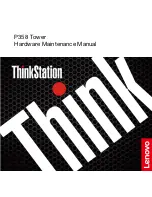
26
5 BASIC Programming
Standard BASIC is employed as the programming language for this unit, and this
section covers application of the BASIC language.
5.1 Features of BASIC
1. BASIC is much easier to use than other programming languages such as
FORTRAN, making it suitable even for novices.
2. Writing programs is also easier because program creation, editing and execution
are all performed by interacting with the computer itself.
The following functions are also available:
1. High-precision calculations are made possible by display of numeric values with
10-digit mantissas and 2-digit exponents (13-digit mantissa and 2-digit exponents
for internal operations)
2. A wide selection of built-in functions makes operation easier.
Standard mathematical functions
SIN COS TAN ASN ACS ATN LOG LN EXP SQR ABS SGN INT FIX FRAC PI
ROUND RAN# DEG
Powerful string handling functions
CHR$ STR$ MID$ LEFT$ RIGHT$ HEX$ DMS$ ASC VAL LEN
High-level mathematical functions
POL REC NCR NPR HYPSIN HYPCOS HYPTAN HYPASN HYPACS HYPATN
CUR
3. 10 independent program areas
up to ten programs can be stored independently in memory at the same time (P0
– 9).
4. Extended variable names
Variable names up to 15 characters long can be used, making it possible to use
names that make contents easy to understand.
5. Powerful debugging function
A TRON command displays the number of the program line currently being
executed, making it possible to easily trace execution and locate mistakes in
programming.
6. Powerful screen editor
Programs can be easily modified and corrected on the screen.
7. Virtual screen function
Thought the actual physical display of the unit has a 32-column x 4-line capacity,
the virtual screen is 32 columns x 8 lines. The virtual screen can be easily
scrolled using the cursor keys.
1 AAAA
2 BBBB
3 CCCC
4 DDDD
5 EEEE
6 FFFF
Actual screen
(4 lines)
Virtual screen (8 lines)
7 GGGG
8 HHHH
















































